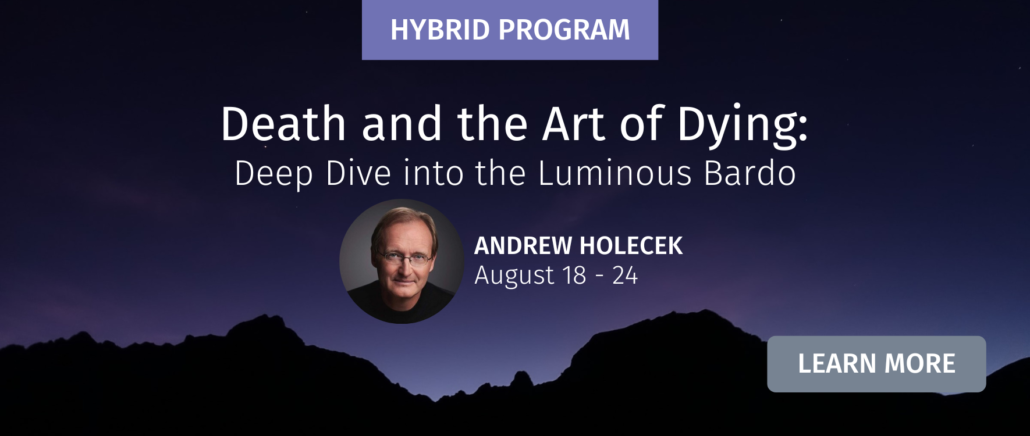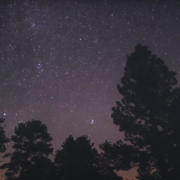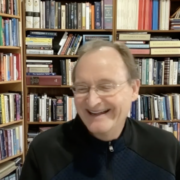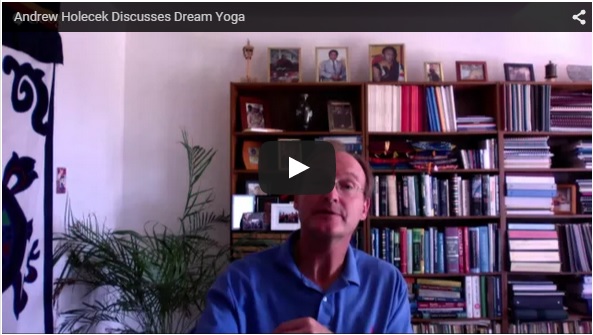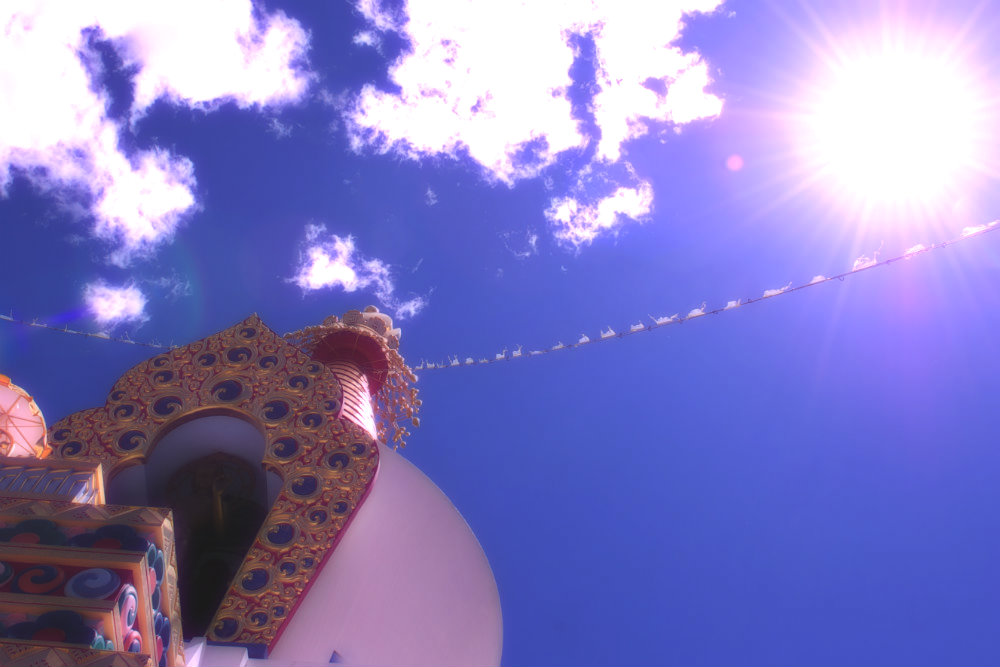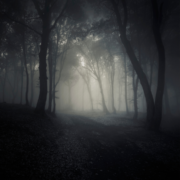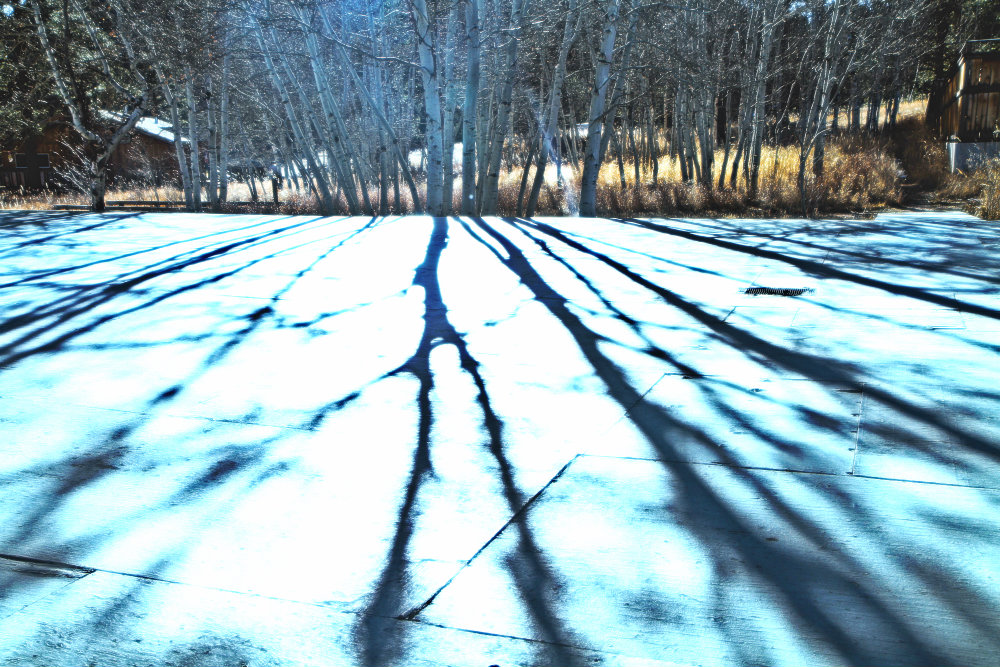The Universal Process
By Andrew Holecek
The Universal Process
In our upcoming DMC event on the Bardo of Dharmata, we’ll be exploring the “Universal Process,” or the reiterative ways nature expresses itself. One such iteration is how sleep and dream relate to death. Euphemisms and idioms for death point to the intimate connection between the process of going to sleep, dreaming, and waking up and the process of dying, the after-death state, and being reborn. When a pet is euthanized, we say things like, “I had to put him to sleep.” “Rest in peace” is commonly spoken as a wish for someone who has died. If it’s a natural death, people usually die lying down, the same posture we assume when we sleep. The Spanish writer Cervantes said, “There is very little difference between a man in his first sleep, and a man in his last sleep.” The Talmud says that sleep is one-sixtieth part of death. The connections are boundless.
In Greek mythology, sleep and death are twins. Nyx, the goddess of the night, and Erebus, the god of darkness, gave birth to twin boys: Hypnos (the god of sleep) and Thanatos (the god of death). Hypnos then fathered Morpheus, the god of dreams.
The process of death and rebirth is also echoed in the arising, abiding, and cessation of each thought. According to some mystical views, the process is repeated yet again in the arising, abiding, and cessation of the cosmos. Lakar Rinpoche refers to the recurring nature of this phenomenon as the “Universal Process.”It has an intuitive elegance and vast practical implications. Because these varied processes share similar characteristics, you can use one to help you understand another. For example, you can use your understanding of the arising, abiding, and cessation of a day to help you understand the arising, abiding, and cessation of a life, a thought, or a dream. Take your insights from one level of the Universal Process and use them to help you understand the others. In this way you can go back and forth between these different levels and strengthen your understanding of them all.
According to Khenpo Karthar Rinpoche and other masters, dream yoga came about principally as a way to prepare for death. The Universal Process illustrates the connection. The Dalai Lama says, “A well trained person can recognize a strict order in the four stages of falling asleep, and is well prepared to ascertain an analogous order in the dying process.” Bokar Rinpoche expands on this concept: “The energy governing each element ceases to be functional and is absorbed into the energy of the following element. This process of absorption of the four elements into each other does not occur only at death, it also happens in an extremely subtle manner when we fall asleep or when a thought is removed from our mind.”
The Measure of the Path
Dream yoga prepares you for the bardo of dying and the bardo of becoming. Sleep yoga prepares you for the bardo of dharmata. We’ll be working with both practices during our time together at DMC this August. In the bardo teachings it is said that every night is a pop quiz that assesses your readiness, and also helps you prepare, for the final exam. Just like most of us do not recognize dreamless sleep or dreams (we’re non-lucid to both), most of us will not recognize any of the death bardos. We will wake up after death into our next life, just like we wake up into our next day, non-lucid to what happened the “night” before. This is yet another instance of dream yoga as “the measure of the path.”
When we come to recognize dreams as dreams, we’ll recognize the bardo of becoming as the bardo of becoming. Then instead of being blown around involuntarily after death, we become lucid and take control over the post-death experience. Just like in a lucid dream, there may be limited control over the bardo content, but endless options for controlling how we relate to that content. In other words, we can have the power of choice, which can ultimately lead to choosing our next form, the next “scene” we wish to inhabit.
At an even more advanced level, someone who recognizes dreamless sleep will also recognize the bardo of dharmata. For that person, there is no bardo of becoming—no more “dreams” of any sort. If they (the issue of identity here is complex, “they” at this point refers to the clear-light mind or formless awareness) do dream, or take on form, they do so lucidly, and therefore voluntarily. They can “come back” in any form whatsoever, with complete freedom of choice, to help others wake up to the freedom they literally embody. Without this lucidity and control, the rest of us reincarnate (re-form) involuntarily due to the force of habit, and will continue to do so ad infinitum until we become lucid to the process and take control. This control, of course, is nothing more than control over our own mind, just as the journey through the bardos is nothing more than a journey into our own mind. Once again, dream yoga isn’t fundamentally about controlling your dreams. It’s about controlling your mind.
There’s a popular saying in Tibet, “Based on my experience last night, I can infer I’m going to have a hard time in the bardos tomorrow.” This could be said by someone who has not prepared for the test. But for someone who has prepared, they can infer that they’ll have a good time in the bardos tomorrow. Instead of dreading the final exam, they look forward to passing it with flying colors. Instead of stressing out about death, they can relax, which is the core instruction for life and death.
How proficient does one need to be in lucid dreaming to experience lucid dying? Guru Rinpoche, the author of The Tibetan Book of the Dead, and therefore a primary resource in the bardo teachings, says, “If the dream-state is apprehended seven times, the transitional process (following death) will be recognized.” To which Gyatrul Rinpoche adds, “The reference to recognizing the dream-state seven times implies that one can recognize the dream-state on a regular basis. If you maintain that ability throughout the rest of your life, then the chances are very good that you will be able to recognize the transitional process [bardo] following death.”
The threefold pattern we see in the bardo teachings, says Lakar Rinpoche, “does not only unfold in the process of dying and death: It is unfolding now, at this moment, at every moment, within our mind.” This, he says, “is a truly revolutionary insight, one which, when it is understood, changes our view of everything.”
And, of course, that pattern also unfolds each and every night. As we have seen throughout our journey, everything unfolds within our mind. Waking, dreaming, sleeping, and dying are all voyages of the mind.
Join Andrew this August
About Andrew Holecek



